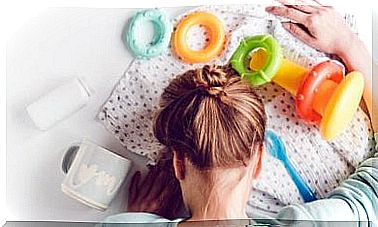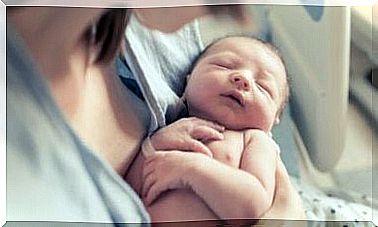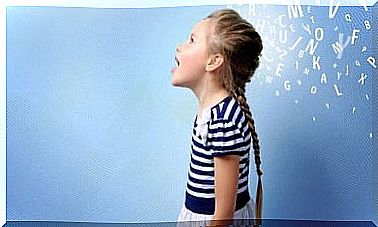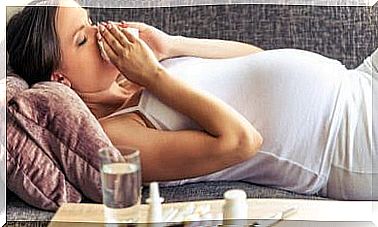How To Help A Baby With A Stuffy Nose
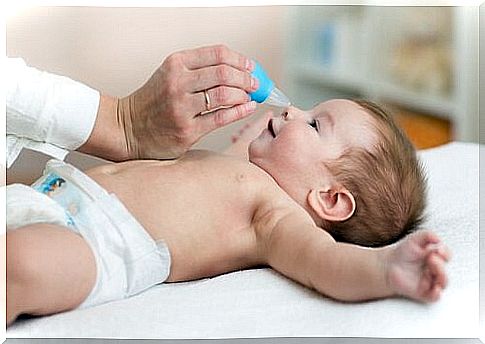
Do you know how to help a baby with a stuffy nose? Here we will explain the correct steps.
A stuffy nose can make babies uncomfortable and lead to difficulty sleeping, eating and breathing. The problem is very common and can be due to allergies or flu, for example.
Babies are also at higher risk of contracting the virus than adults.
An easy way to clog a baby’s nose is to use a nasal aspirator, saline solution (which can be prepared at home or bought from the pharmacy) and a napkin.
1. Place the baby on its back. In each nostril, give it two drops of saline. If you prefer to make it at home, you only need to mix a teaspoon of salt in 240 ml of water.
2. Let the salt solution to soak for a few seconds. When you lift the baby, the cord should come out on its own. If it does not, you can use the nasal aspirator.
3. Insert the nozzle into the nostril carefully but firmly. For it to work properly, you must insert it into the baby’s nose and suck out the string. Do not be afraid to bring it in. The baby’s nostrils are quite deep, and if you do not place it well, you will not suck anything out.
4. Empty the nasal aspirator by pressing it and wipe clean around the nose with the napkin. To clean the vacuum, use soap and water, then set it upside down to dry.
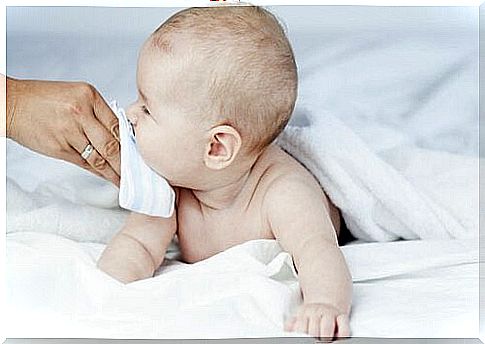
There are other practical and less difficult ways to help a baby with a stuffy nose. It is important to emphasize that you should only use them if it is strictly necessary, such as when green string is visible. If you are unsure, only use saline solution 2-3 times a day.
Humidifier
One of the best ways to get rid of nasal congestion is with water vapor, but do not use it directly on the face; it can lead to serious burns.
An electric humidifier is used to create a more humid environment, and this makes it much easier to get rid of mucus.
Saline solution in spray form
There are saline sprays that are good for helping babies with stuffy noses. They can be used to moisturize the nasal passages, which can dry out in dry climates.
Although the spray is easy to use , there may be ingredients that are not suitable for babies. Therefore, it is important to always talk to a pediatrician first.
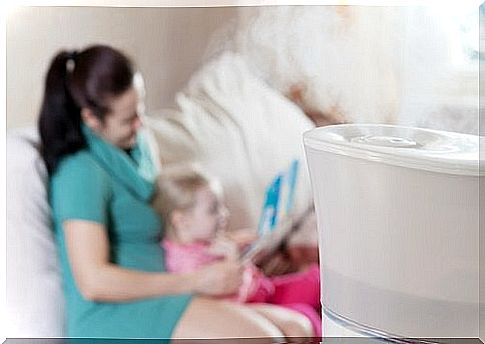
First , it is recommended to continue breastfeeding, as newborns receive immune protection from it. If you cannot or do not want to breastfeed, it is important to ensure that the baby receives all the nutrition it needs from elsewhere.
It is also very important to find out the cause of the nasal congestion to find the right treatment.
Here are some tips to help prevent nasal congestion in babies:
- The room where the baby sleeps should be ventilated and free of dust.
- Adults are not allowed to smoke near the child.
- The indoor environment should not be too dry or humid.
- If you have a humidifier, keep it clean so that mold does not grow. It can make the blockage worse.
- Do not use chemical air fresheners or cleaning products that are too strong, as they can cause allergic reactions.
- Pet hair can also cause allergies.
- Avoid air conditioning and air heaters. Air conditioning makes the environment dry, but an electric fan can also be problematic. An electric humidifier can help you increase the humidity.
Even if you now know how to help a baby with a stuffy nose, you also need to be very patient. This can be a very difficult problem for the child.
Always clean your nose slowly and with great care. It is best to do this before the baby gets food so that he can eat properly. It can also be done before sleeping so that it does not wake up with discomfort.
Do not forget to give the child plenty of water if it is old enough; it can help prevent nasal congestion.


